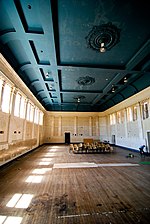Anglican Schools Commission
The Anglican Schools Commission (ASC) was established in 1985, following the passage of a resolution by the Perth Diocesan Synod of the Anglican Church of Australia. It was given the role of creating affordable Christian education in the Anglican tradition, and accessible to the disadvantaged and children with disabilities. Since its establishment, the group has founded or acquired nine schools, initially in Western Australia. Each school is known as an "Anglican Community School" or "Anglican School" which is included in their name. However the Commission does not control the member schools, but rather each school has its own constitution, and is governed by its own School Council drawn from Church, parent and community sources. Instead, the ASC lays down policies and procedures in a wide range of areas, most of which relate to educational and management issues. Since 1998, Anglican schools in New South Wales and Victoria have becomes members of the Commission association.
Excerpt from the Wikipedia article Anglican Schools Commission (License: CC BY-SA 3.0, Authors).Anglican Schools Commission
Wollaston Road, Town Of Cambridge
Geographical coordinates (GPS) Address Phone number Website Nearby Places Show on map
Geographical coordinates (GPS)
| Latitude | Longitude |
|---|---|
| N -31.956577777778 ° | E 115.76955277778 ° |
Address
Wollaston Theological College
Wollaston Road 5
6010 Town Of Cambridge, Mount Claremont
Western Australia, Australia
Open on Google Maps










